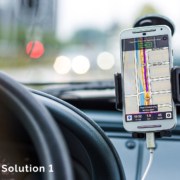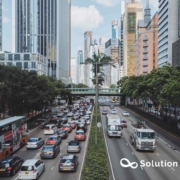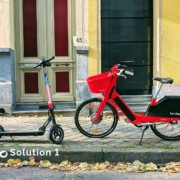Transportation innovation is changing the way we travel.
- Taxi services are still an important part of modern public transportation.
Transportation has been one of the crucial necessities of humankind over the years. Taxi services are one of the vital options for private transportation. Such as other modes of transport, taxi services have evolved over the years. People to book a taxi initially, a phone call was made to a taxi service.
Taxi service plays an important role in urban transportation. Different from other public transportation modes, the taxi service provides flexible door-to-door service and full-day operations.
People to book a taxi initially, a phone call was made to a taxi service. Nowadays the remarkable usage of smartphones and the internet has replaced phone calls with modern tools and technologies. Customers can take a ride by using a website service or a mobile application, track their taxi using real-time maps and make cashless payments.
“According to the report of taxi cab service market, is anticipated to rise at a considerable rate during the forecast period till 2026. In 2022, the market is growing at a steady rate and with the rising adoption of strategies by key players, the market is expected to rise over the projected horizon.”
Sharing economy platforms have brought more centralization to the process where peer drivers are unknown to each other and also has affected small independent taxi businesses. Various advances in mobile application technologies have transformed many economic systems, allowing drivers to participate in the workforce flexibly using mobile applications.
Past few years, Uber has revolutionized the taxi business. It has attracted a lot of partner drivers who offer passengers rides through the app in large urban areas. Uber controls over 60% of the ride-hailing market in Europe and over 65% in the United States. Uber has grown from $500 million in global net revenue in 2014 to more than $13 billion in 2019, an annual growth rate of more than 500%.
- Autonomous vehicles would allow replacing the city’s transport systems.
Digitization and automation have caused radical and disruptive change for many industries, with some products becoming extinct, and thousands of jobs disappearing.
Emerging trends in the transportation sector, such as advances in autonomous driving expose professional drivers such as taxi drivers, train drivers and bus drivers, truckers, parcel deliverymen, and many more to this risk. Such as vehicles without drivers can reach passengers in their location and transport them to their desired destination.
“Gartner analysts predict that by 2030, there will be four times as many Level 4 autonomous robotaxis operating globally than there are taxis in 2022.”
Autonomous vehicles would allow replacing the city’s transport systems, including taxis, private cars, and public buses, with automated mobility-on-demand systems, thus leading to a reduction of the environmental impact of the transportation sector. Such systems would provide affordable mobility and at the same time offer spatial and temporal flexibility never seen before.
The taxi business has already been put under pressure by gig economy models, such as the spread of transportation services, Uber or Lyft that are facilitated by mobile technologies.
Shared autonomous vehicles would have an even greater impact on the need for human drivers, potentially rendering their work obsolete and changing transportation services to an even larger extent. Such as adopting the concept of mobility on-demand, consisting of shared vehicles used for one-way passenger mobility.
In a worst-case scenario, taxi drivers’ jobs could disappear completely. Shared autonomous vehicles as having the potential to replace traditional taxis service as these are expected to provide the same service at a reasonable cost.
New means of transportation do not just replace existing modes of transportation; they also produce new transportation trends among consumers.










